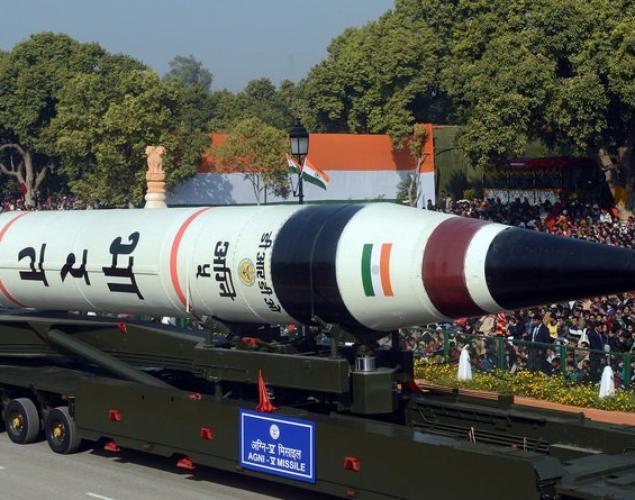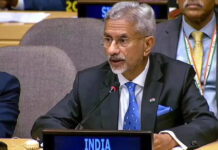March 12, 2013
India aborted a test of its first domestically developed long-range missile after it veered off course. Less than a year ago India successfully launched a nuclear-capable missile with a range of more than 5,000 kilometers.

Missile Agni V is displayed during the Republic Day parade in New Delhi on January 26, 2013
March 12, 2013
India aborted a test of its first domestically developed long-range missile after it veered off course. Less than a year ago India successfully launched a nuclear-capable missile with a range of more than 5,000 kilometers.

Missile Agni V is displayed during the Republic Day parade in New Delhi on January 26, 2013
The maiden flight of India's first domestically developed long-range cruise missile was aborted midway on Tuesday after it veered off course, defence scientists said.
The two-stage Nirbhay missile blasted off from the eastern state of Orissa but the test flight was halted prematurely to "ensure coastal safety", the state-run Defence Research and Development Organisation (DRDO) said.
"After travelling approximately midway, deviations were observed from its intended course," spokesman Ravi Gupta said in a statement, which claimed the basic mission objectives from the test firing had been met.
With a range of 1,000 kilometres (620 miles), the subsonic Nirbhay missile is intended to cruise like an aircraft and can be launched from land, sea and air, defence officials said.
The surface-to-surface missile is fitted with a turbojet engine and is capable of flying at low altitudes to avoid detection.
India already has in its arsenal the supersonic BrahMos missile which it developed jointly with Russia.
Tuesday's test comes less than a year after India successfully launched its nuclear-capable Agni V ballistic missile with a range of more than 5,000 kilometres.
The Indian military views the Agni V missile as a key boost to its regional power aspirations and one that narrows – albeit slightly – its huge gap with China's technologically advanced missile systems.
While the shorter-range Agni I and II were mainly developed with India's traditional rival Pakistan in mind, later versions with longer range reflect the shift in India's focus towards China.
Courtesy: AFP
















































































































